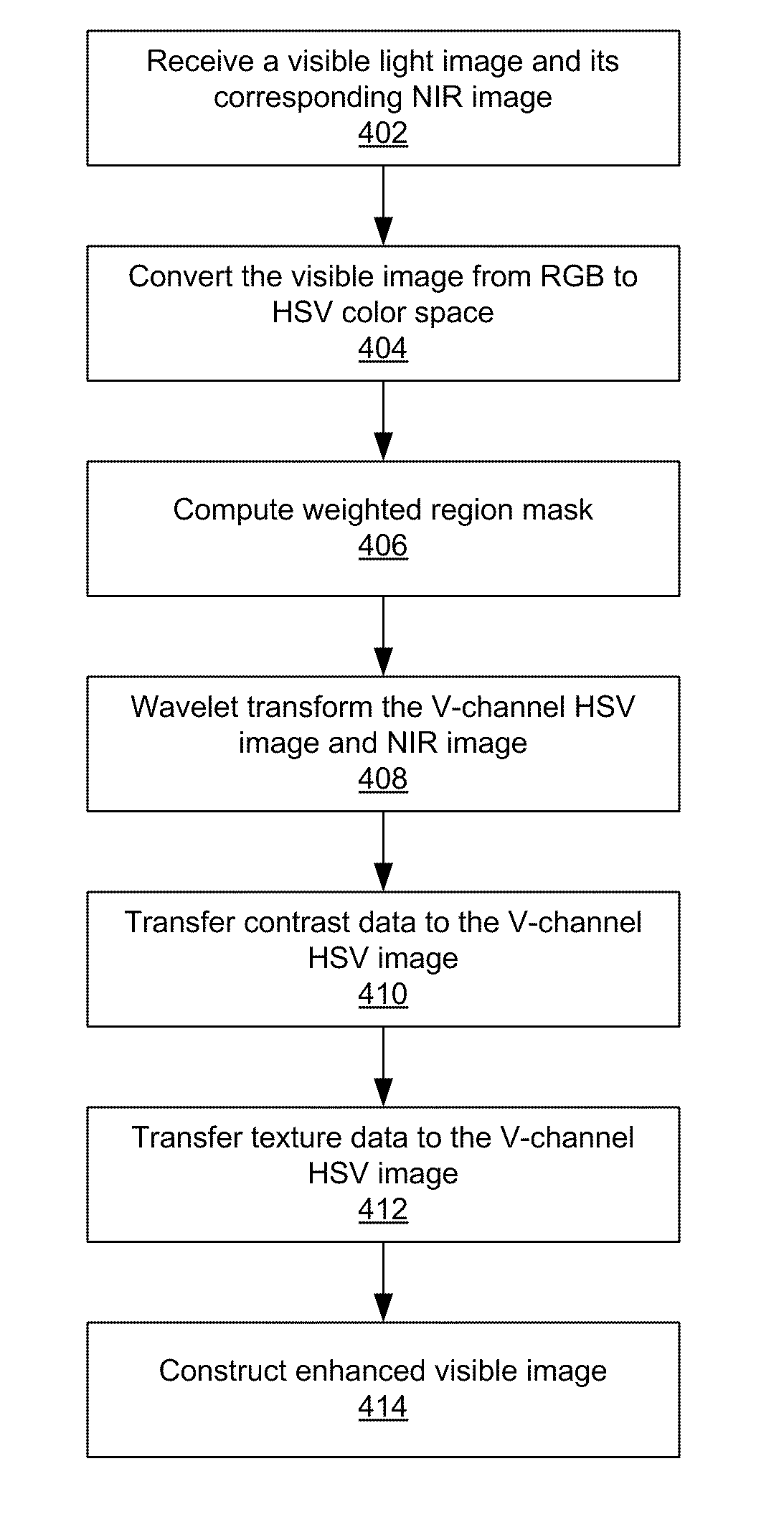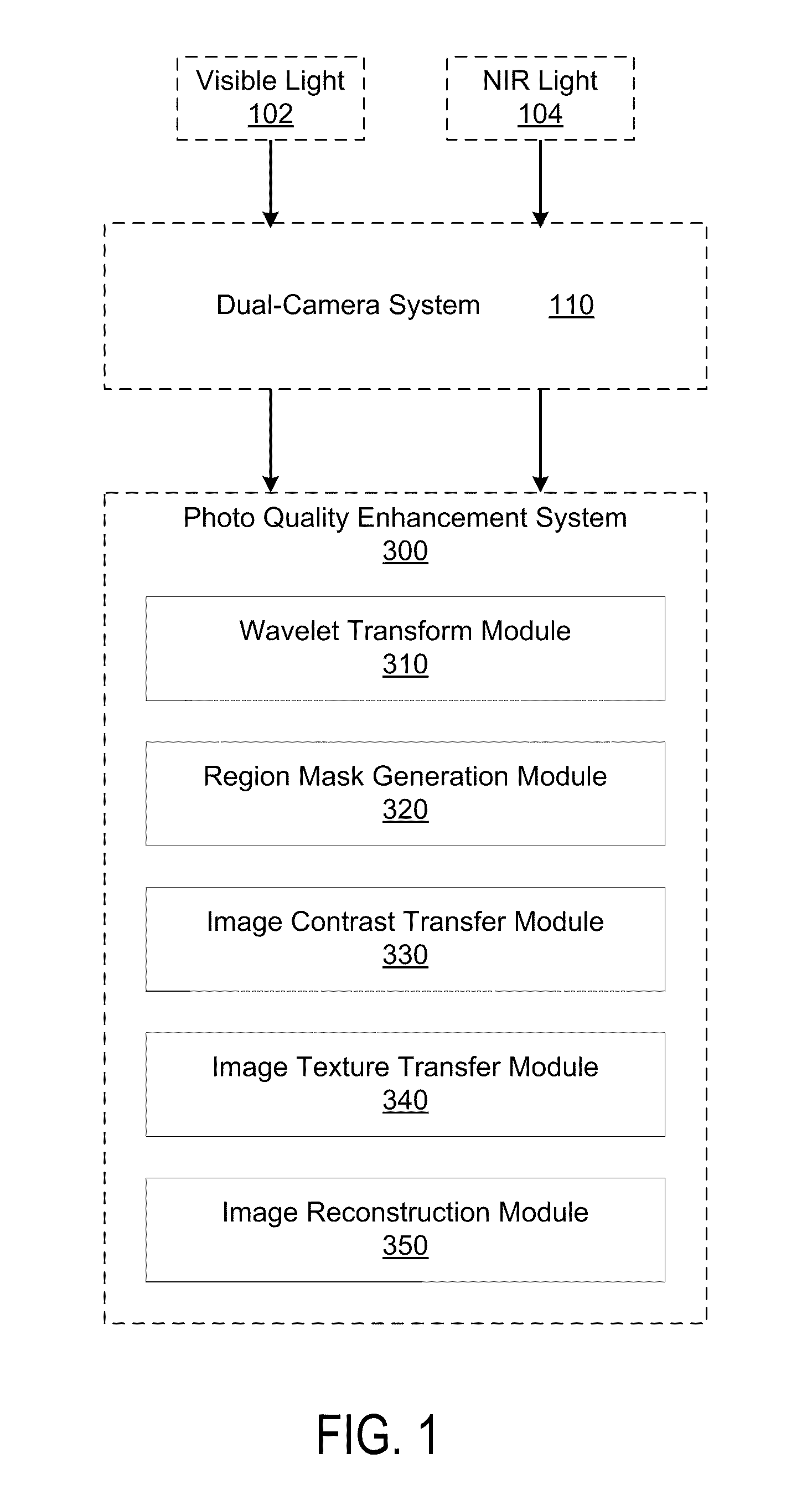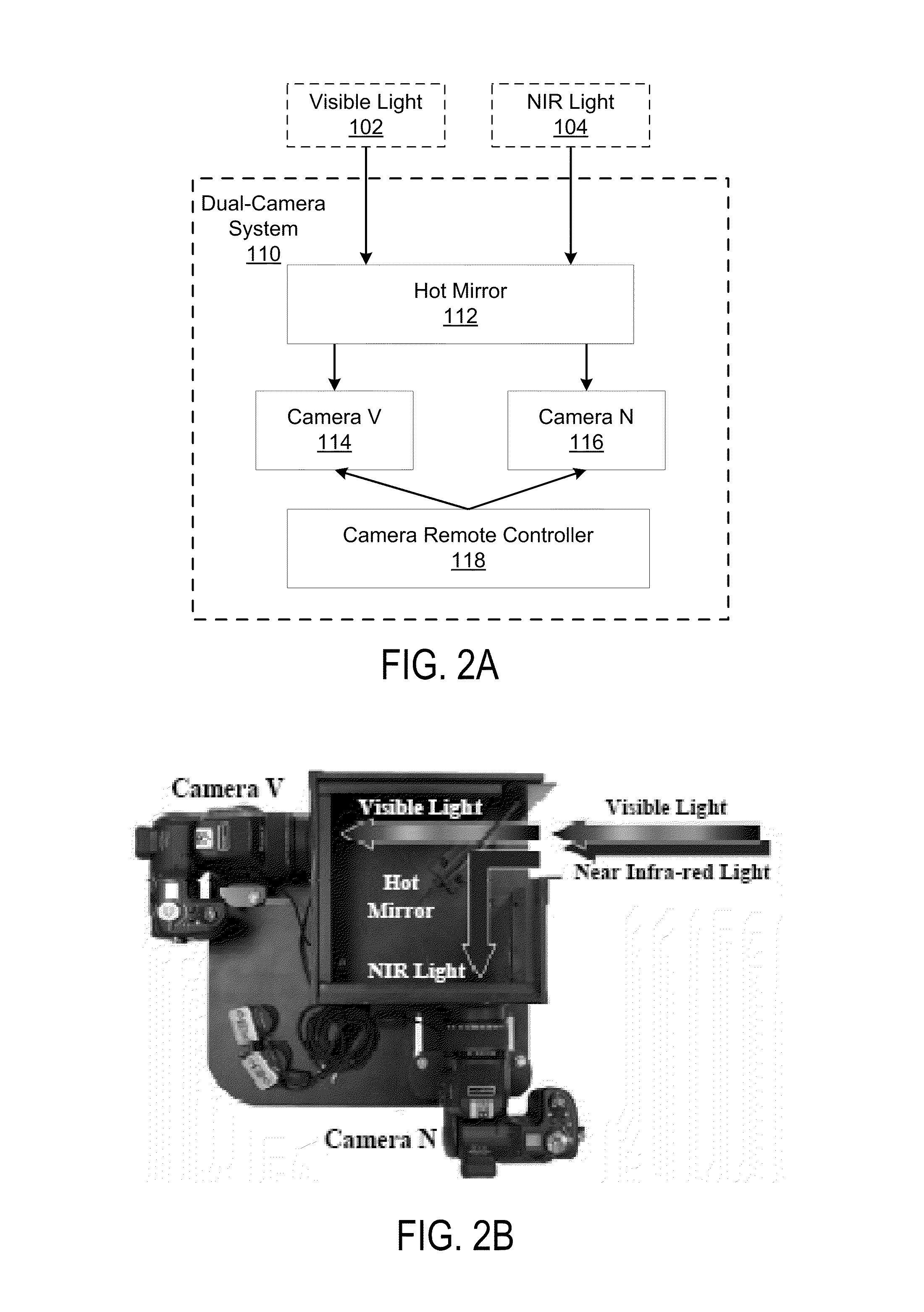Enhancing photograph visual quality using texture and contrast data from near infra-red images
a contrast data and near infra-red technology, applied in image enhancement, image analysis, instruments, etc., can solve the problems of omitting a lot of scene details in digital cameras, no single exposure in cameras that can capture all the details, and even worse in consumer-grade cameras. achieve the effect of enhancing the visual quality of visible light images
- Summary
- Abstract
- Description
- Claims
- Application Information
AI Technical Summary
Benefits of technology
Problems solved by technology
Method used
Image
Examples
Embodiment Construction
[0018]Referring to FIG. 1 for purposes of explanation, the invention provides a dual-camera system 110 to capture a visible light image (VIS) and a corresponding NIR image of the same scene simultaneously, and a photo quality enhancement system 300 to enhance the visual quality of the visible light image using the contrast and rich texture details of the corresponding NIR image. Given as input one VIS image and its corresponding NIR image captured by the dual-camera system 110, the photo quality enhancement system 300 can adaptively detect visually unsatisfactory pixels (e.g., too dark or too light) in the VIS image, and transfer contrast information and high frequency texture from its NIR counterpart to enhance the visual quality of the VIS image. The dual-camera system 110 is further described with reference to FIG. 2A and FIG. 2B. The photo quality enhancement system 300 is further described with reference to FIGS. 3A-3B and 4.
[0019]FIG. 2A shows a block diagram of the dual-camer...
PUM
 Login to View More
Login to View More Abstract
Description
Claims
Application Information
 Login to View More
Login to View More - R&D
- Intellectual Property
- Life Sciences
- Materials
- Tech Scout
- Unparalleled Data Quality
- Higher Quality Content
- 60% Fewer Hallucinations
Browse by: Latest US Patents, China's latest patents, Technical Efficacy Thesaurus, Application Domain, Technology Topic, Popular Technical Reports.
© 2025 PatSnap. All rights reserved.Legal|Privacy policy|Modern Slavery Act Transparency Statement|Sitemap|About US| Contact US: help@patsnap.com



